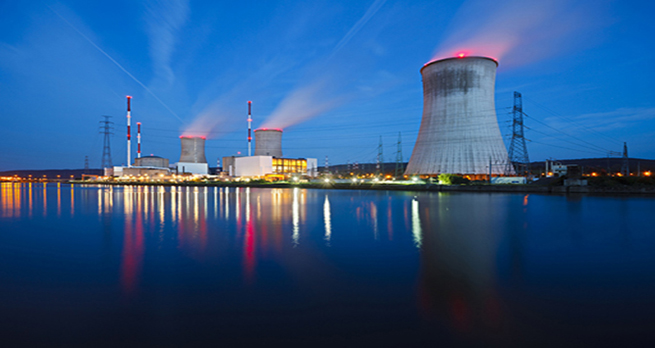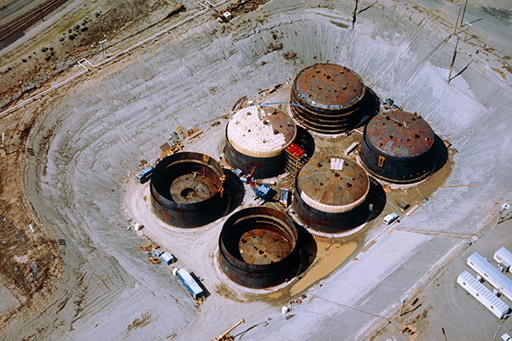2.3.2 Types of radioactive waste
One of the major issues with nuclear power is what to do with the radioactive waste intrinsic to the process of fission.
Classifying the waste
Radioactive waste comes in a wide variety of forms, from the clothing worn by workers at a power plant to the fuel rods themselves. The range of activity levels of the materials in the waste is also wide ranging, for example, from minute traces of radioactivity on a pair of worker’s gloves to the contents of spent fuel rods which have levels of activity more than 100 million times that of natural uranium.
Classifying the items is helpful to ensure that each item is dealt with in an appropriate manner, for safety and economic reasons. Different schemes have been proposed and used in different countries at different times. These schemes can become quite complex but all classify waste into three broad categories: low-, intermediate- and high-level waste.
Low-level waste
Laboratory clothing that has become contaminated, used paper towels, as well as liquid, gaseous and solid wastes from different parts of the fuel cycle can be classed as low-level waste. These items share low activity and low heat production: in fact, the heat produced in them is negligible.
Although low-level wastes require isolation and containment for a few hundred years, they can be stored at facilities near the surface with limited regulation. Most of the material is barely radioactive but is nonetheless sealed in steel drums and checked before storage.
Intermediate-level waste
Intermediate-level waste has higher activity (per unit mass or volume) than low-level waste, and so poses a greater radiation hazard. It includes fuel cladding and wastes from different stages of fuel reprocessing. The storage needs to be more elaborate than that for low-level waste, but no cooling is necessary, or only very limited cooling, during storage and disposal.
Waste in this category requires disposal at greater depths than low-level waste, of the order of tens of metres to a few hundred metres.
High-level waste
The fission products found within the used fuel or waste materials remaining after spent fuel is reprocessed are high-level waste. These items produce so much heat from the decay of radioisotopes that continuous cooling is required, and safe storage requires elaborate precautions to be taken. Such waste requires specially constructed disposal facilities.
Disposal
Whatever the form of the waste, some initial processing usually takes place to reduce the volume of the waste, or to make it safer and more convenient to handle. For example, low-level waste may be incinerated or compressed and possibly encapsulated in concrete; intermediate-level waste may be evaporated if it is in liquid form or cut up or crushed if it is in solid form, prior to encapsulation in concrete-filled drums as shown in Figure 16.

High-level waste is generally placed in containers and stored, often under water, for some years in order for its activity level to reduce. A proportion of spent fuel is also reprocessed.
Only the low-level waste currently has established and accepted mechanisms for final storage or disposal. It is typically either sent to regulated landfill sites or buried in special low-level waste repositories. Currently, intermediate- and high-level wastes are held in storage on the surface, often at the nuclear power stations from which they originated, while a longer-term solution is sought.
Initially this high-level waste is so active that it will be extremely hot. The emission of the radioactive particles transfers energy and raises the temperature in the vicinity. The fuel rods, therefore, need to be actively cooled for years before they can be dealt with.
In the next section, you will look at the decommissioning of Dounreay power station.

